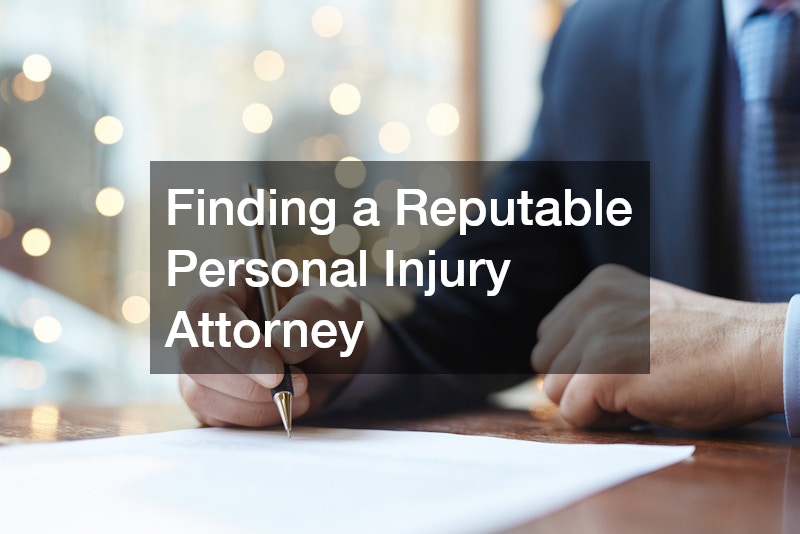
Are you looking to start flipping houses in Florida? You’re certainly not alone. According to Motley Fool, the percentage of flipping home sales jumped from 5.7% in 2017 to 9.6% in 2022. The increasing demand for housing, matched by the potential for high rates, is probably the force behind this growth. Other probable reasons include the rise of popular house-flipping TV shows such as the Property Brothers and Flipping Vegas.
If you’re interested in flipping houses in Florida, there are certainly best practices, tips, and tricks you should have up your sleeve. Here we’ll look at how to flip houses in Florida successfully.
What Is House Flipping?

Before we dive into how to flip houses in Florida, let’s look at house flipping at a glance. You’ve probably heard about flipping businesses, from flipping cars to websites. ‘Flipping’ refers to how little time it takes to buy, do modifications then resell. House flipping means buying property to renovate and then selling with a quick turnaround time.
While house flipping could be profitable, it also comes with risks, such as difficulty obtaining a buyer and unexpected repairs during renovation. However, through strategic planning and research, you can minimize the risks and increase your chances of a profit.
Why Florida Is Suitable for House Flipping

Florida is a popular state for house flipping. To begin with, Florida has an ever-growing population. For example, according to the U.S. Census Bureau, between April 2020 and July 2022, the Florida population grew by 3.3%, almost five times the total national growth in the same period. A higher population equals higher housing demand.
But that’s not all. Florida is one of the most Tax-friendly states in the U.S., which is any investor’s dream. In addition, Florida is an attractive tourist location with an inviting climate, beachfront properties, and a relaxed atmosphere. While some areas like Tampa have the best flipping conditions, it’s best to do due diligence before buying a house for flipping.
Let’s dive into how to flip houses in Florida for profit. Here are guidelines to follow.
1. Finding the Right Houses

Wondering how to flip houses in Florida successfully? It all starts with finding the right houses. To find the right houses to flip, you need to research to find homes that are easy to flip. You can start with public records to identify distressed properties, for example, those with foreclosures. In realty auctions, you can find homes selling at a discount. You could also drive around neighborhoods and identify potential houses, such as abandoned properties.
You could also use the networking approach, where you connect with other professionals in the field who could have the expertise. For example, you can network with real estate agents, property wholesalers, and investors. A less physical approach would be keeping up with real estate on social media channels such as Facebook and Twitter or through online searches on listing platforms such as Zillow and Redfin.
Real estate experts use the 70% rule. According to Bob Villa, the 70% house flipping rule determines the maximum price you can buy a house. Maximum Buying Price=After Renovation Price* 70% – Repair Costs. Market research is essential, so you don’t end up with a house you can’t sell because of location-specific problems.
2. Conducting Home Inspection
Once you have identified a home you can buy and flip, the next step should be a home inspection. As you learn how to flip houses in Florida, remember scheduling home inspections before buying will protect you from the additional risk of high repair costs. While doing a home inspection as a house flipper is valuable, working alongside a certified home inspector is best.
A professional home inspection takes between 2-4 hours, on average, according to the American Society of Home Inspectors, and will include the condition of the home’s heating, electrical, plumbing systems, and structural and foundational components. A home inspection will make it easy to estimate renovation costs and determine if the work is worth it.
Once you receive the home inspector’s report, leverage the knowledge to make your flip successful. If the report shows that the house needs significant repairs, use this knowledge to negotiate for a lower buying price. You could also use the report to prioritize what gets repaired. For example, a leaking roof would need more priority than adding sculptures in the garden.
3. Improving the Curbside Appeal

Some sold for flipping have structural problems, haven’t been occupied, or have aged. As an experienced house flipper, you can determine if a house could bring profit through curb appeal. Curb appeal is what a buyer sees first from the entrance and the perfectly mowed lawns, the pristine roofs, and the dashing patio. To sell your house faster, you must woo potential buyers with curb appeal.
The value of curb appeal is hard to ignore in the real estate market. Door Loop says homes with curb appeal sell 7% more than similar homes. For example, if a home goes for $400,000, 7% would be $28,000, which is a good reward for improving curb appeal through roofing service. Curb appeal also increases the total number of leads, from where you can get quality property buyers.
Landscaping is one of the essential aspects of improving curb appeal. It’s a broad category that includes tree maintenance, lawn care, flowery and greenery, and home garden improvement. Another aspect is exterior design features such as a patio, deck, fence, and mailbox. You may need to look for bush hog rental services for overgrown vegetation.
4. Tackling Mold Issues
Florida’s climate is not always inviting or good. The humid and warm conditions are perfect for molds to develop. That doesn’t mean every house is filled with mold. It means you might need mold services before flipping a house. Mold can be harmful to house occupants. According to the CDC, mold can cause a stuffy nose, cough, and extreme reactions in asthmatic people.
Mold grows in humid and warm conditions. The most common culprits in Florida homes are leaks in pipes and roofs. Gutter service can ensure your gutters channel rainwater away from your house to the right wastewater channels. Another tip you could apply is increasing ventilation. You can ask the renovating contractor for ideas on improving ventilation without skyrocketing energy bills.
As you learn how to flip houses in Florida, remember that buyers are looking for homey spaces to bring their family and be safe even on such a quick turnaround. If the house you’re reselling has serious but obvious mold issues, you would be putting such families at risk by ignoring the mold problems.
5. Treating Other Health Hazards
Other health hazards, such as pests and rodents, could scare potential buyers apart from molds. Also, dealing with or disclosing a problem to the buyer is a good ethical practice. The former is better. Other health hazards include lead in homes built before 1978, asbestos, and carbon monoxide.
You can deal with rodents by engaging rodent control services. They’ll typically inspect and identify common rodent routes, and breeding grounds, then mitigate. Some areas in Florida may be prone to snakes and dangerous lizards, so research the house and its downsides. If the fireplace is likely to cause carbon monoxide, install a detector and improve ventilation.
Lead paint was common before 1978 when it was classified as a carcinogen. You may need additional testing to confirm that the house has lead. It may have been removed already in most cases, but you can remove it if it’s still intact. You may also order an asbestos inspection in case asbestos was part of the building materials for the house.
6. Replace Broken Amenities
Another thing you should focus on when learning how to flip houses in Florida is showcasing a home in pristine condition. It doesn’t mean you have to repair and renovate everything. However, it would help if you prioritized anything that matters to a potential client, such as properly-working amenities. Nobody wants to live with exposed electrical wires and poor room electrical connectivity, so you may need to call residential electrical contractors.
Broken pipes, malfunctioning HVAC systems, broken door locks, and damaged tiles are exactly how to get potential buyers out of the door and away from your deal. Sometimes fixing these amenities will not cost much but will make a real difference. Other times replacing components, for example, buying new air compressors, will give a 100% reset on an appliance.
Fixing broken amenities can increase home value, attract more buyers and increase buyers’ confidence. For example, septic tank installations can make buyers confident that a home is well-taken care of and worth the price tag. Again, with home flipping, you want the house to take the least time in the market, and the way to achieve that is by selling a home with as few faults as possible.
7. Making the House Energy Efficient
Our how-to-flip houses in Florida guide would be incomplete without mentioning the role of energy efficiency in modern house sales. One nationwide study by Freddie Mac, a government-backed enterprise, found that energy-efficient homes sold for 2.7% more on average, with more efficient homes attracting a 3-5% increase in value.
That may not seem like a lot, but for a home selling at $500,000, 2.7% is $ 13,500, not to mention the value you’d be delivering to your client. The increasingly eco-conscious real estate market is looking for homes that operate on less energy. Some would opt for a hybrid power grid- solar systems, while others want more efficient house design and appliances.
Since you can’t do all possible energy-efficient projects, prioritize those that deliver value at a reasonable cost. A good place to start is sealing air leakage to reduce the need for automatic climate control. Another affordable solution is house insulation.
8. Financing the Flip
You now know how to research the market, do house research, and renovations, but how do you finance your house flip? To learn how to flip houses in Florida, you must understand how financing affects everything. The Florida housing market prices may have experienced a 6.1% rise last year, according to Redfin, but that doesn’t mean you underestimate the risk or overestimate your earnings.
The best place to source financing is your savings because they carry less risk and no interest accumulation. Yet most time, you may not have enough savings to finance a flip, which is where loans come in. You can opt for a conventional bank loan, specially customized fix and flip, home equity, or hard-money loans.
You must consider the risks of house flipping before taking a loan. There’s no guarantee that your house will sell in the expected time or at the value you hope. Consider all your income sources and evaluate if you can finance the loan should your house re-sale delay.
9. Selling the Flipped House
Finally, you have financed your flipped property; how do you stage and sell it? After repairs and renovations, give the house a deep clean to give it a fresh look. Remove all the clutter, waste materials, and debris. You can even paint the exteriors to make staging easier.
When marketing your house, focus on the key strengths of the house. Show off the kitchen place with ample lighting, and display the patio with well-selected pillows. If you’re staging your property online, use good photography. In a survey by Zillow, 46% of buyers first use photography before visiting a property on sale.
House flipping can be a high ROI business if you understand the market and its trends. Florida, especially in Tampa, Orlando, and Pembroke Pines, can give you a ready market for a flipped house. However, it’d be best to carefully plan, research wide, and even talk to some experts. With this detailed guide on how to flip houses in Florida, we hope your real estate strategy will give you good returns.




